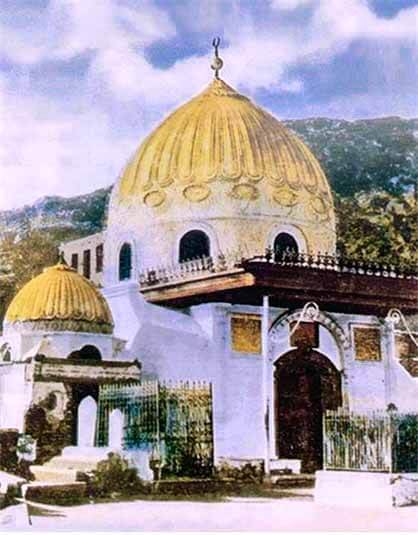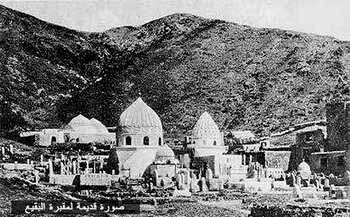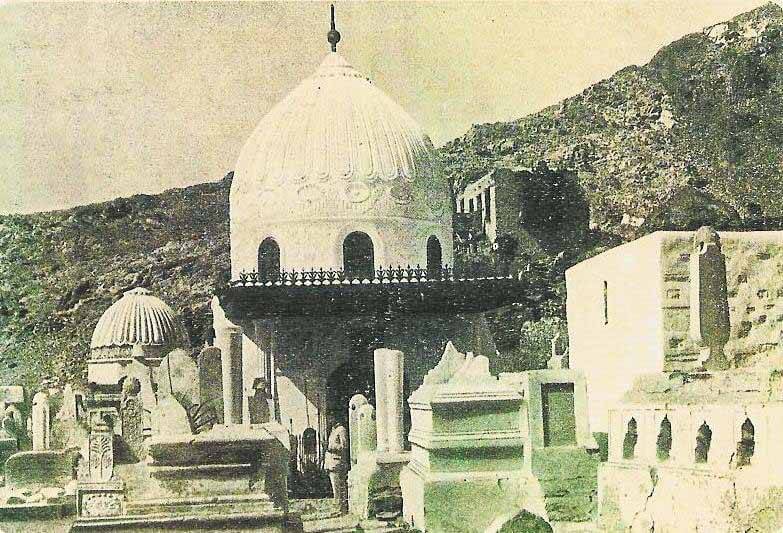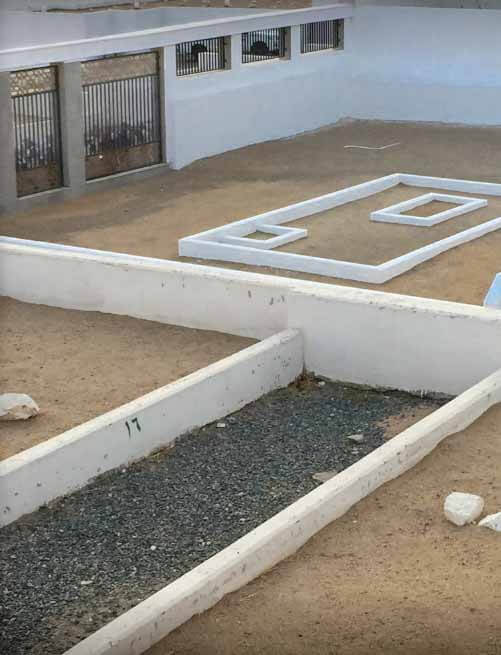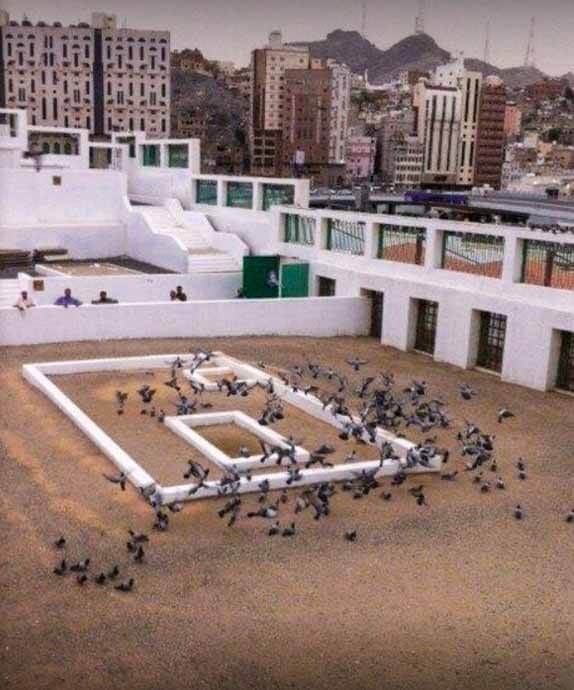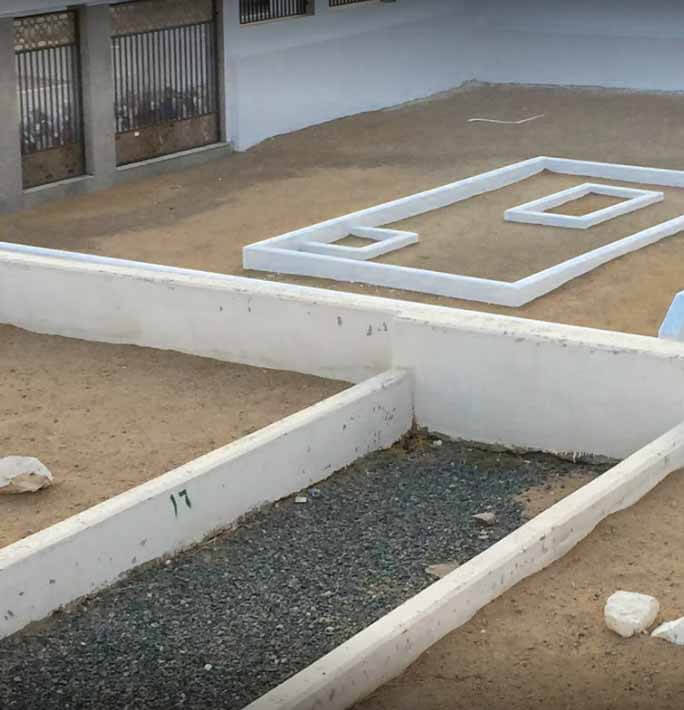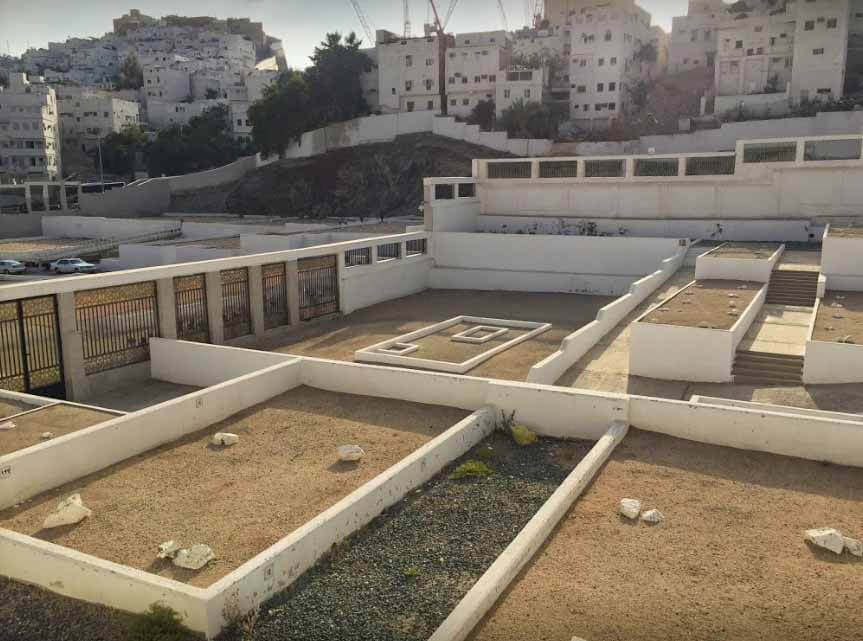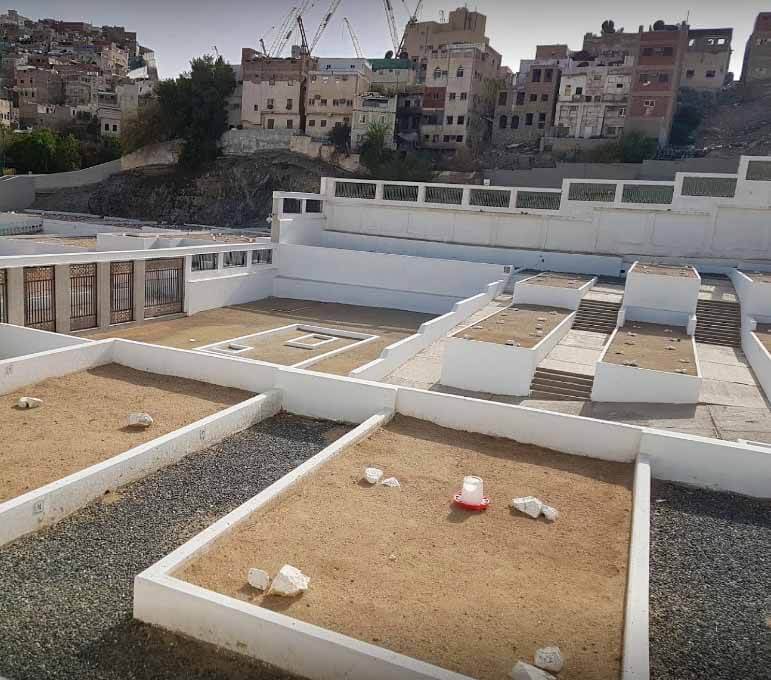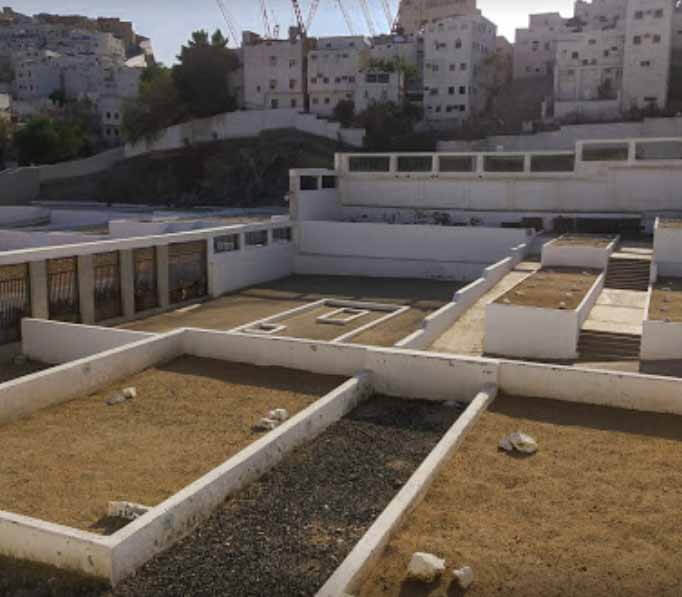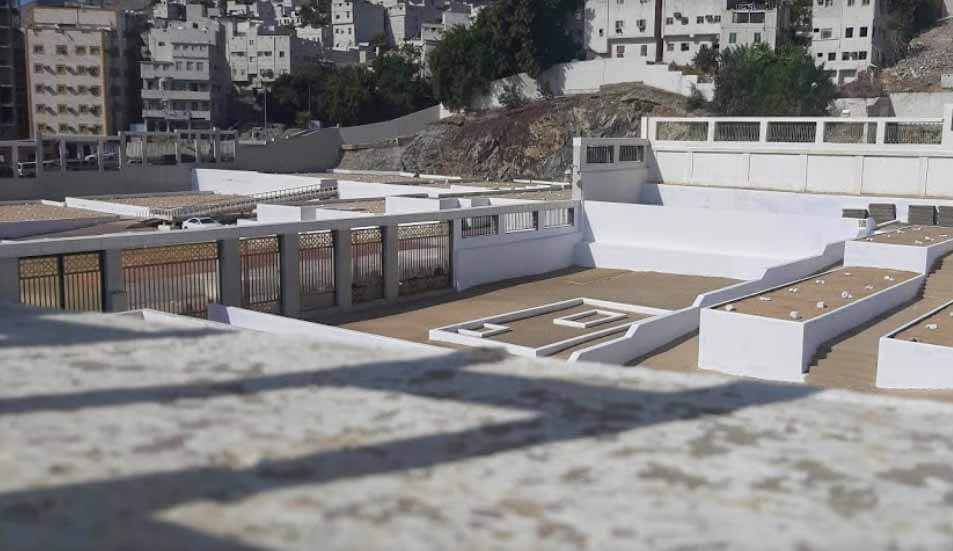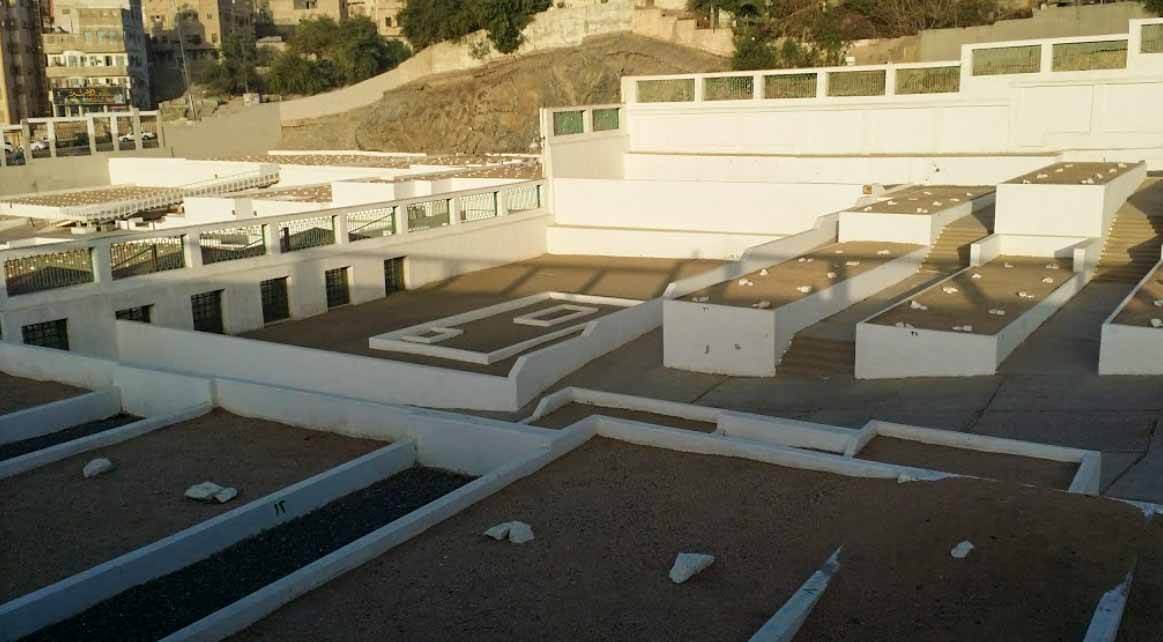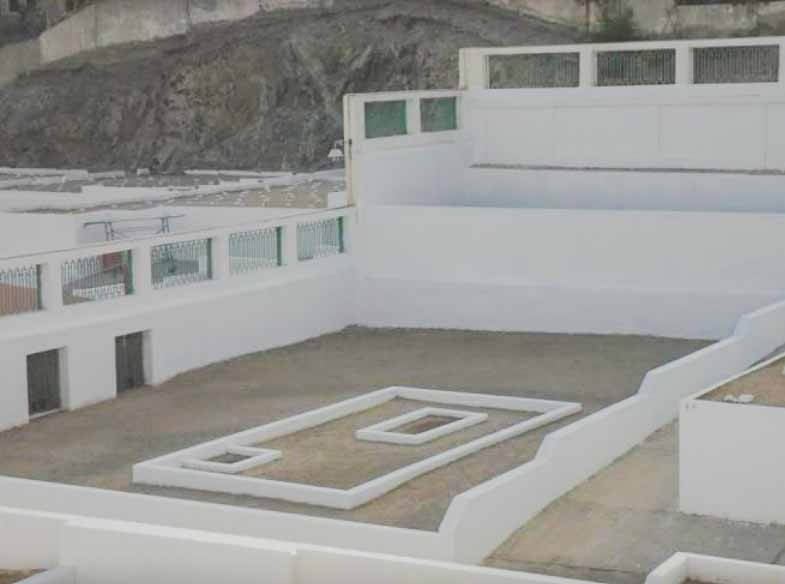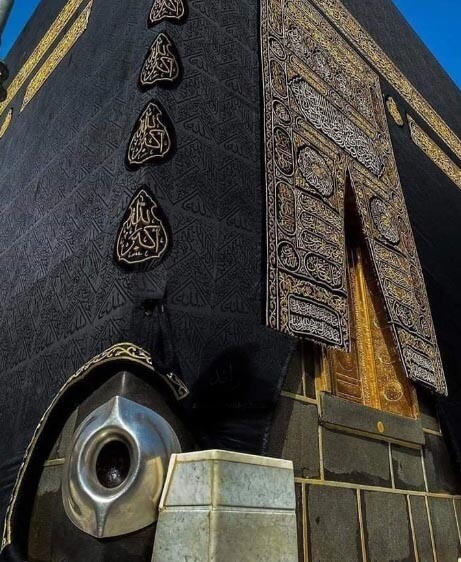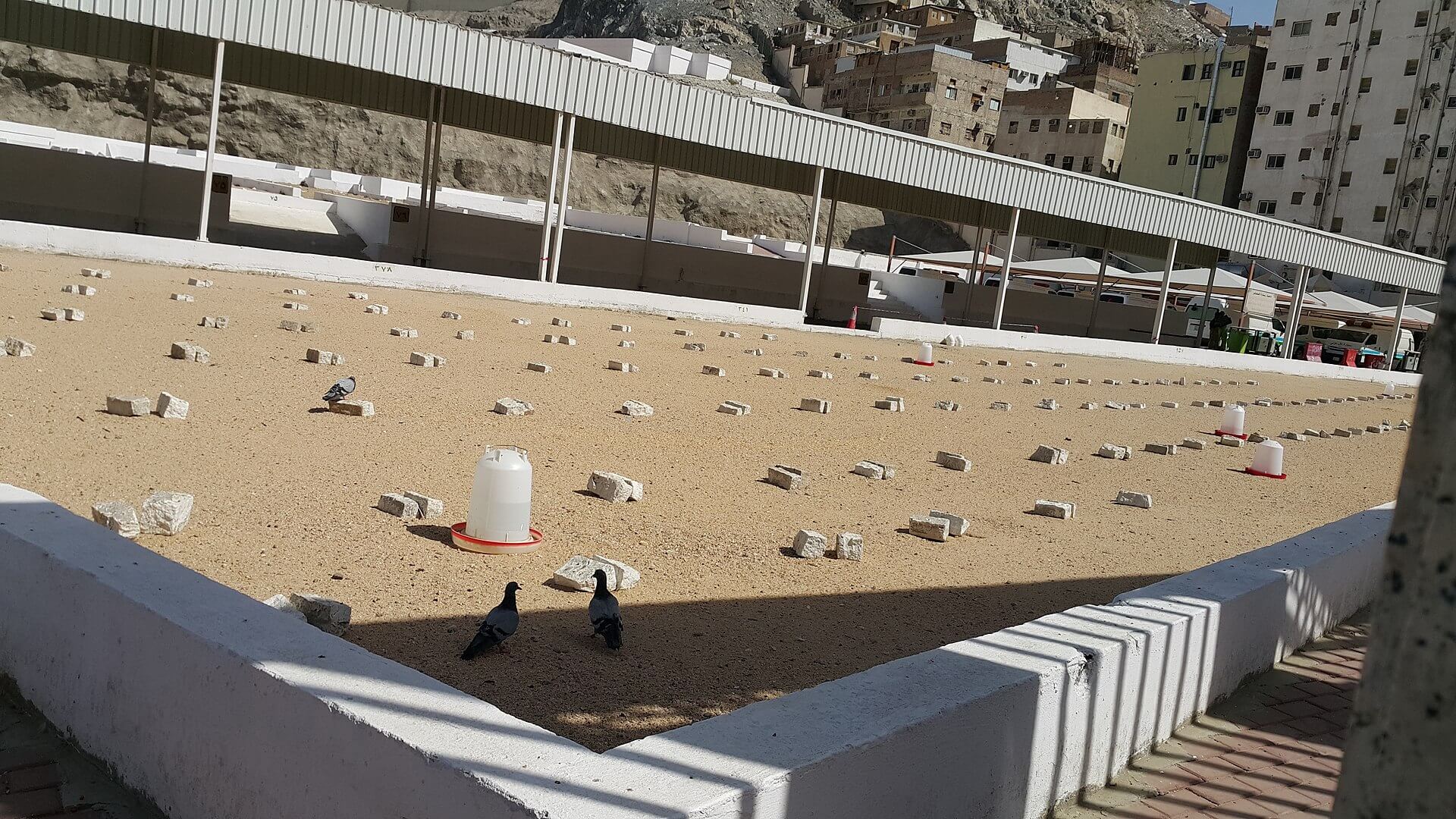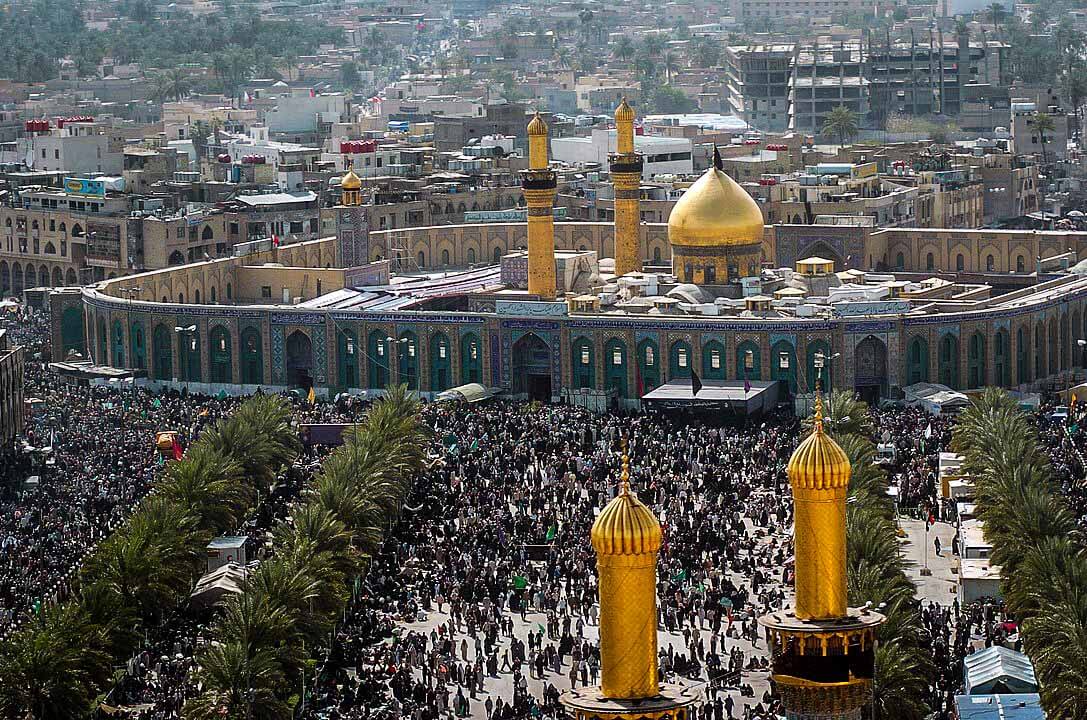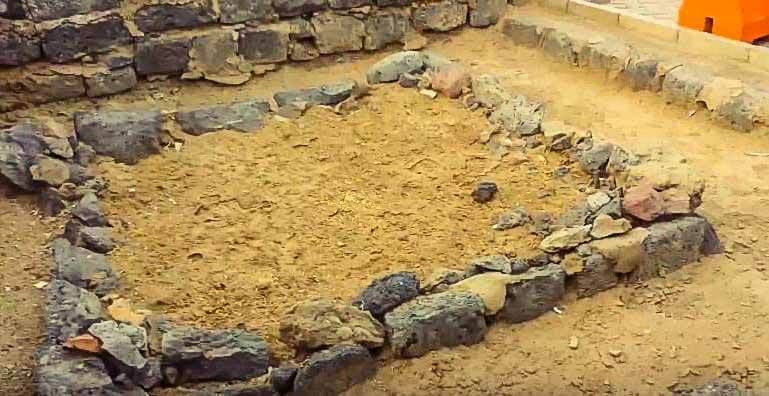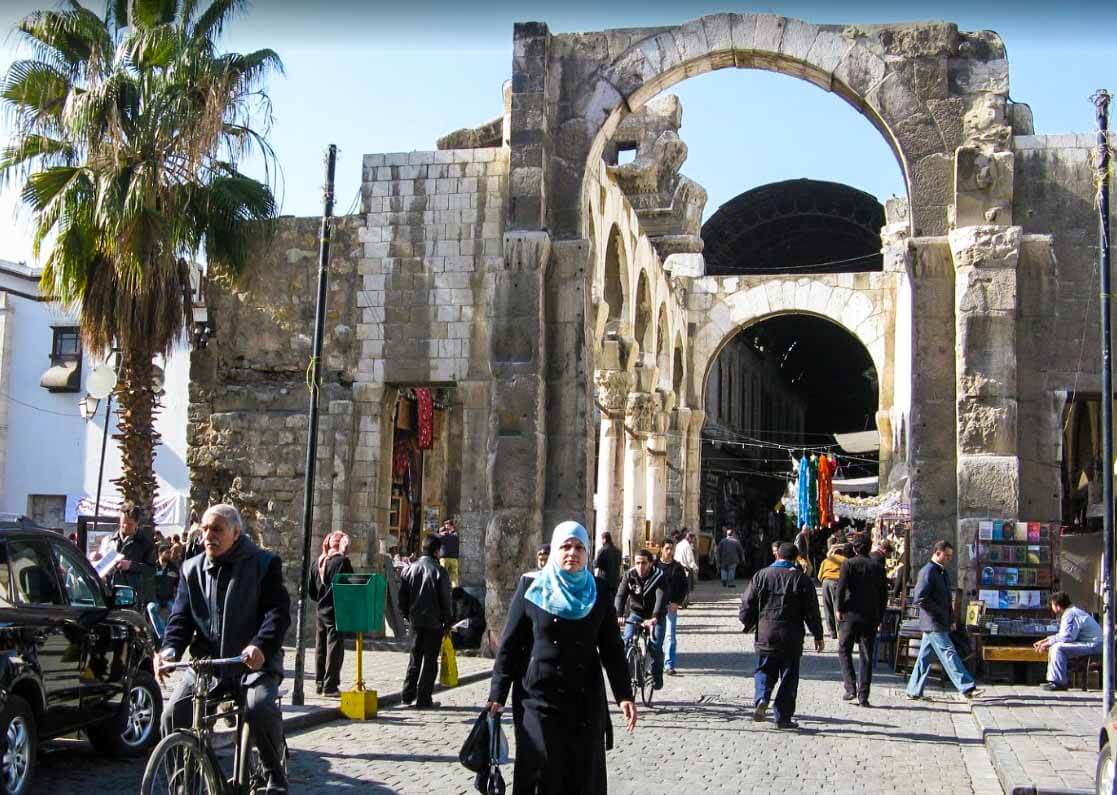Mecca Sharif, Saudi Arabia
Coordinates: 21.434756, 39.828643
Bibi Khadija bint Khuwaylid رضي الله عنها was the first wife and first follower of the Hz. Prophet Muhammad ﷺ. She was the daughter of Khuwaylid ibn Asad, a leader of Quraysh tribe in Mecca, and a successful businesswoman in her own right.
Bibi Khadija رضي الله عنها is often referred to by Muslims as “Mother of the Believers”. She and her daughter Bibi Fatimah رضي الله عنها are two of the most important female figures in Islam. Hz. Prophet Muhammad ﷺ was monogamously married to her for 25 years.
Profession
Bibi Khadija رضي الله عنها became a very successful merchant. It is said that when the Quraysh’s trade caravan travelers gathered to embark upon their summer journey to Syria or winter journey to Yemen, Bibi Khadija’s رضي الله عنها caravan equalled the caravans of all other traders of the Quraysh put together.
Bibi Khadija رضي الله عنها did not travel with her trade caravans; she employed others to trade on her behalf for a commission.
In 595 Bibi Khadija رضي الله عنها needed a co-worker for a transaction in Syria. She chose Hz. Prophet Muhammad ﷺ for the trade in Syria. With the permission of Hz. Abu Talib ibn Muttalib رضي الله عنه, his uncle, he ﷺ was sent to Syria with one of Bibi Bibi Khadija رضي الله عنها’s رضي الله عنها servants.
This caravan experience earned Hz. Prophet Muhammad ﷺ the honorific titles “Al-Sadiq (“the Truthful”)” and Al-Amin (“the Trustworthy” or “Honest”).
She sent one of her servants, Maysarah, to assist him. Upon returning, Maysarah gave accounts of the honorable way that Hz. Prophet Muhammad ﷺ had conducted his business, with the result that he brought back twice as much profit as Bibi Khadija رضي الله عنها had expected.
Marriage to Hz. Prophet Muhammad ﷺ
Bibi Khadija رضي الله عنها entrusted a friend named Nafisa to approach Hz. Prophet Muhammad ﷺ and ask if he would consider marrying. When Hz. Prophet Muhammad ﷺ hesitated because he had no money to support a wife, Nafisa asked if he would consider marriage to a woman who had the means to provide for herself.
Hz. Prophet Muhammad ﷺ agreed to meet with Bibi Khadija رضي الله عنها, and after this meeting they consulted their respective uncles. The uncles agreed to the marriage, and Hz. Prophet Muhammad’s ﷺ uncles accompanied him to make a formal proposal to Bibi Khadija رضي الله عنها.
Bibi Khadija رضي الله عنها’s uncle accepted the proposal, and the marriage took place. At the time of the marriage Hz. Prophet Muhammad ﷺ was 25 years old and Bibi Khadija رضي الله عنها was 40 years old.
Hz. Prophet Muhammad ﷺ and Bibi Khadija رضي الله عنها were married monogamously for 25 years.
Children
Hz. Prophet Muhammad ﷺ and Bibi Khadija رضي الله عنها may have had six or eight children. (Sources disagree about number of children: Al-Tabari names eight; the earliest biography of Hz. Prophet Muhammad ﷺ, by Ibn Ishaq, names seven children; most sources only identify six).
Their first son was Hz. Qasim رضي الله عنه, who died after his third birthday (hence Hz. Prophet Muhammad’s ﷺ kunya Abu Qasim).
Bibi Khadija رضي الله عنها then gave birth to their daughters Bibi Zaynab رضي الله عنها,Bibi Ruqayyah رضي الله عنها, Bibi Umm Kulthum رضي الله عنها and Bibni Fatima رضي الله عنها; and lastly to their son Hz. Abd-Allah رضي الله عنها.
Hz. Abd-Allah رضي الله عنها was known as at-Tayyib (“the Good”) and at-Tahir (“the Pure”) because he was born after Hz. Prophet Muhammad ﷺ was declared a prophet by the Hz. Gabriel عليه اسلام as a direct message from Allah. Hz. Abdullah رضي الله عنه also died in childhood.
Two other children also lived in Bibi Khadija رضي الله عنها’s household: Hz. Ali ibn Abi Talib عليه اسلام, and Hz. Zayd ibn Harithah رضي الله عنه, a boy from the Udhra tribe who had been kidnapped and sold into slavery. Hz. Zayd رضي الله عنه was a slave in Bibi Khadija’s رضي الله عنها household for several years, until his father came to Mecca to take him home. Hz. Prophet Muhammad ﷺ insisted that Hz. Zayd رضي الله عنه be given a choice about where he lived, and Hz. Zayd رضي الله عنه decided to remain where he was, after which Hz. Prophet Muhammad ﷺ legally adopted Hz. Zayd رضي الله عنه as his own son.
Becoming the first follower of Muhammad
According to the traditional Sunni narrative, when Hz. Prophet Muhammad ﷺ reported his first revelation from the Hz. Jibril عليه اسلام, Bibi Khadija رضي الله عنها was the first person to convert to Islam.
After his experience in the cave of Hira, Hz. Prophet Muhammad ﷺ returned home to Bibi Khadija رضي الله عنها in a state of terror, pleading for her to cover him with a blanket. After calming down, he described the encounter to Bibi Khadija رضي الله عنها, who comforted him with the words that Allah would surely protect him from any danger, and would never allow anyone to revile him as he was a man of peace and reconciliation and always extended the hand of friendship to all.
According to some sources, it was Bibi Khadija’s رضي الله عنها cousin, Waraka ibn Nawfal, who confirmed Hz. Prophet Muhammad’s ﷺ prophethood soon afterwards.
Yahya ibn Afeef is quoted saying that he once came, during the period of Jahiliyyah (before the advent of Islam), to Mecca to be hosted by Hz. Abbas ibn ‘Abd al-Muttalib رضي الله عنه, one of Hz. Prophet Muhammad’s ﷺ uncles mentioned above. “When the sun started rising”, he said, “I saw a man who came out of a place not far from us, faced the Kaaba and started performing his prayers. He hardly started before being joined by a young boy who stood on his right side, then by a woman who stood behind them. When he bowed down, the young boy and the woman bowed, and when he stood up straight, they, too, did likewise. When he prostrated, they, too, prostrated.” He expressed his amazement at that, saying to Abbas: “This is quite strange, O Abbas!” “Is it, really?” retorted al-Abbas. “Do you know who he is?” Hz. Abbas رضي الله عنه asked his guest who answered in the negative. “He is Muhammad ibn Abdullah ﷺ, my nephew. Do you know who the young boy is?” asked he again. “No, indeed,” answered the guest. “He is Ali son of Abu Talib (عليه اسلام). Do you know who the woman is?” The answer came again in the negative, to which Abbasرضي الله عنه said, “She is Bibi Khadija bint Khuwaylid (رضي الله عنها), my nephew’s wife.” This incident is included in the books of both Ahmad ibn Hanbal and Al-Tirmidhi.
Bibi Khadija رضي الله عنها was supportive of Hz. Prophet Muhammad’s ﷺ prophetic mission, always helping in his work, proclaiming his message and belittling any opposition to his prophecies. It was her encouragement that helped Hz. Prophet Muhammad ﷺ believe in his mission and spread Islam.
Bibi Khadija رضي الله عنها also invested her wealth in the mission. When the polytheists and aristocrats of the Quraysh harassed the Muslims, she used her money to ransom Muslim slaves and feed the Muslim community.
In 616 the Quraysh declared a trade boycott against the Hashim clan. They attacked, imprisoned and beat the Muslims, who sometimes went for days without food or drink. Bibi Khadija رضي الله عنها continued to maintain the community until the boycott was lifted in late 619 or early 620.
Death
Bibi Khadija رضي الله عنها passed away in “Ramadan of the year 10 after the Prophethood”, i.e., in November AD 619. Hz. Prophet Muhammad ﷺ later called this tenth year “the Year of Sorrow”, as his uncle and protector Hz. Abu Talib رضي الله عنه also died at this time.
Bibi Khadija رضي الله عنها is said to have been about 65 years old at the time of her passing away. She was buried in Jannat al-Mu’alla cemetery, in Mecca, Saudi Arabia.


